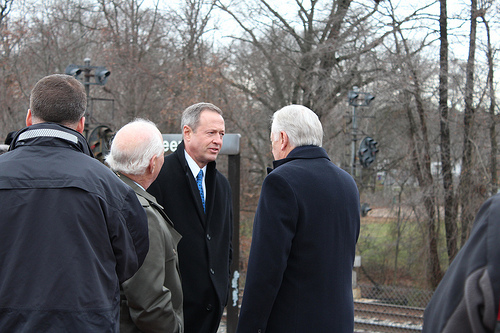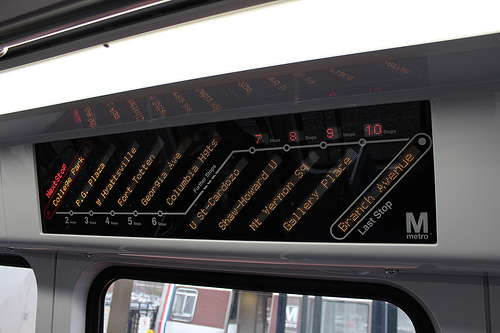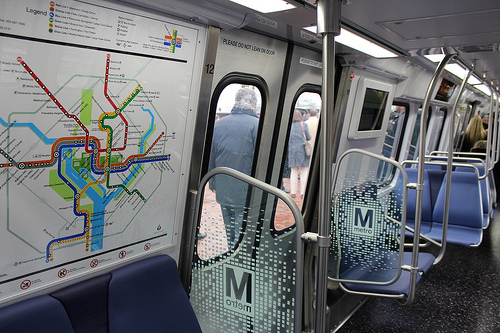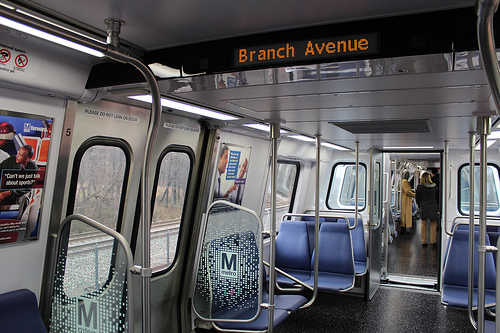See Metro’s first 7000 series train as it arrives for testing
This morning, WMATA showed the press its newest acquisition: the 4 “pilot” cars of the 7000 series. The new cars are safer and feature many new elements that should please riders.
The 7000 series is the largest series of cars that Metro has ever ordered. So far, the agency has ordered 528 of the new cars. Eventually, WMATA could have up to 748 of the new state-of-the-art cars, which would make it possible to run all trains as 8-car trains during peak periods.
Several dignitaries attended this morning’s unveiling in Greenbelt, including Maryland Governor Martin O’Malley, Senators Barbara Mikulski and Ben Cardin, House Majority Whip Steny Hoyer, and DC Mayor Vincent Gray, as well as many curious commuters who happened to pass through. One woman I spoke to was hoping to ride the new cars for her trip toward Branch Avenue, but couldn’t stay long enough, boarding an earlier train instead. I told her that the cars weren’t ready for passengers yet; they’re scheduled to enter service later this year.
The new cars will be significantly different from the existing fleet of railcars. In fact, they’re so advanced technologically that they can’t operate with any of the current railcar series. They will also only be able to operate in 4 or 8-car trains.
New features include LCD information screens and digital signs that indicate the current location and future stops.
Right now, WMATA has received 4 cars from Kawasaki, the company manufacturing them. These cars are “pilot” cars, which will be tested over the next 8 months. Any issues that are uncovered will be addressed and fixed before the remainder of the cars are constructed. Full production on the rest of the cars is expected to start this summer.
During testing, riders might see the 7000 series pilot cars, but they won’t be able to ride them until more cars arrive, since WMATA doesn’t operate 4-car trains anymore. Metro expects to begin putting 7000 series cars into service late this year, perhaps in December.
When they finally get to ride, riders will find them quite different from the current fleet of cars, some of which date back to the Ford Administration. Carpet is gone from the cars, as is the exterior brown stripe. Instead, riders will find no-slip rubber flooring and ergonomic seats.
The doors and stanchions have been relocated to improve circulation. And because the new cars will operate only in sets of 4 (as opposed to sets of 2 with the current fleet), there is much more room for standing passengers since there are fewer operator cabs.
To prepare for the onslaught of new cars, WMATA is building a new commissioning facility and test track in Greenbelt.
The test track will run from Greenbelt station almost all the way to College Park, and will eliminate the need to single-track on this segment during off-peak periods as was done when the 5000 and 6000 series trains arrived.
These facilities aren’t complete yet, but are well under construction. The commissioning facility can be seen from the outer loop of the Capital Beltway and preparations for the test track are easily visible from Green Line trains between Greenbelt and College Park.
It may be a while before 7000 series cars are a common sight in the system. But by this time next year, you might find yourself riding on one.
By 2017, the 7000 series cars will have replaced all of the old 1000 series cars, and by the end of 2018 they’ll make up over half the fleet.






